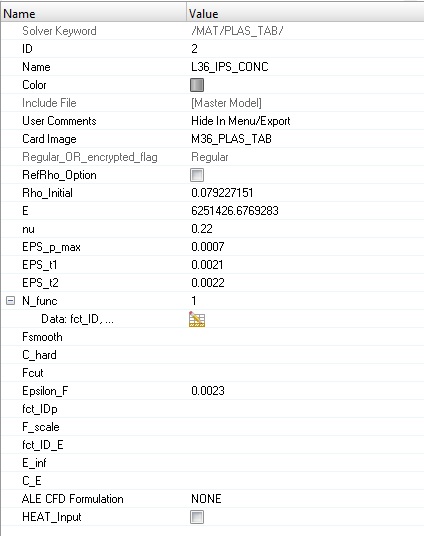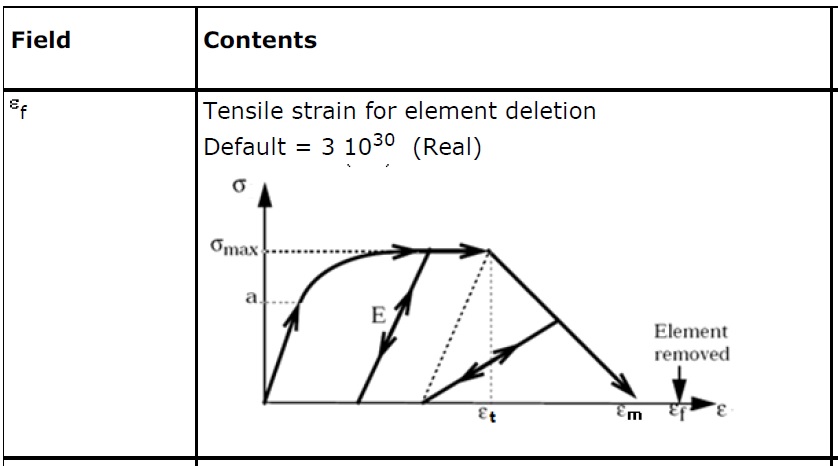I am trying to understand the various parameters for LAW36.
1. EPS_p_max
2. EPS_t1 - Maximum tensile failure strain (EPSt in reference guide)
3. EPS_t2 - Maximum tensile failure damage (EPSm in reference guide)
4. Epsilon_F - Tensile strain for element deletion (EPSf in reference guide)
What I understand about these is :
1. EPS_p_max - Plastic Strain beyond this will cause element deletion
2. EPS_t1 - Strain beyond which the line connecting t1 and t2 will be used
3. EPS_t2 - Strain beyond which the element will be separated from the connected elements
4. Epsilon_F - Strain beyond which element will be deleted
If my understanding is correct then what is the point of having Epsilon_F? We already have EPS_p_max to determine the element deletion strain.
<?xml version="1.0" encoding="UTF-8"?>
<?xml version="1.0" encoding="UTF-8"?>